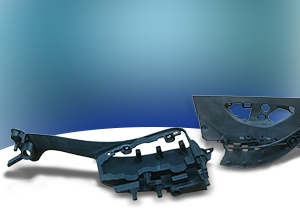 At the car designer house “Thomas Pazulla technical services” prototypes are now build by a 3D printer, specifically the X400 by German RepRap.The decision to change from a laser-sinter process to the fused-filament fabrication (FFF) was not just driven by the cost savings.
At the car designer house “Thomas Pazulla technical services” prototypes are now build by a 3D printer, specifically the X400 by German RepRap.The decision to change from a laser-sinter process to the fused-filament fabrication (FFF) was not just driven by the cost savings.
“The parts are a lot more rigid than the laser-sintered models”, says Thomas Pazulla. “The model contains hooks which often broke off in the past.”
Large parts like this door panel which includes an armrest and is 650 x 450 mm in size are printed in smaller batches. Then they are glued together and sanded for a smooth surface. Pazulla prints using PLA, a so-called bio-plastic. PLA is the most common material for 3D printing. Compared to the well-known ABS, PLA is less prone to warping during temperature changes and hence better suited for RepRap 3D-printers. This is because of the lower printing temperature which also saves energy. The modulus of elasticity is about 4000 MPa. “The X400 is a very precise machine. I only get a deviation of 4/100 to 5/100 mm per 200mm. That’s more than enough”, says the design engineer.
Thomas Pazulla started with a single X400 3D-printer. By now he has so many orders that he runs a small X400 park. Pazulla: “My customers are changing from laser-sintered parts to 3D-printed models made of PLA.”
Source
German RepRap, press release, 2015-03-16.
Supplier
Share
Renewable Carbon News – Daily Newsletter
Subscribe to our daily email newsletter – the world's leading newsletter on renewable materials and chemicals









